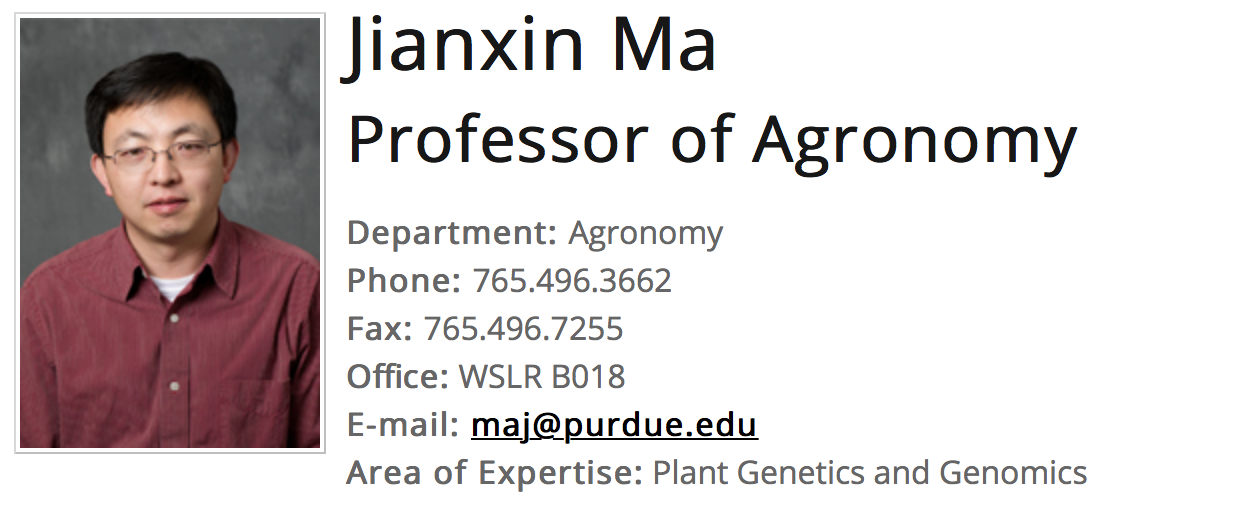博文
Nature Plants:大豆种油含量与种皮光滑性状驯化基因
||
Elevation of soybean seed oil content through selection for seed coat shininess
Many leguminous species (豆科植物) have adapted their seed coat (种皮) with a layer of powdery (粉状的) bloom (蜡粉) that contains hazardous (危险的) allergens (过敏原) and makes the seeds less visible, offering duel protection (双重保护) against potential predators (捕食者). Nevertheless, a shiny seed surface without bloom is desirable for human consumption and health, and is targeted for selection under domestication. Here we show that seed coat bloom in wild soybeans is mainly controlled by Bloom1 (B1), which encodes a transmembrane transporter-like protein (跨膜转运蛋白) for biosynthesis of the bloom in pod endocarp (荚果内果皮). The transition from the ‘bloom’ to ‘no-bloom’ phenotypes is associated with artificial selection of a nucleotide mutation that naturally occurred in the coding region of B1 during soybean domestication. Interestingly, this mutation not only ‘shined’ the seed surface, but also elevated seed oil content in domesticated soybeans. Such an elevation of oil content in seeds appears to be achieved through b1-modulated upregulation of oil biosynthesis in pods. This study shows pleiotropy (多效性) as a mechanism underlying the domestication syndrome (典型表现), and may pave (为…铺平道路) new strategies for development of soybean varieties with increased seed oil content and reduced seed dust.
豆科植物种皮上有一层粉状的蜡粉,一方面包含危险的过敏原,另一方面使得种子不易被发现,为种子避免捕食者提供双重的保护。然而,一个光亮的种子表面对于人类的食用和健康是十分受欢迎的,这也是大豆驯化的一个主要目标性状。本文发现在野生型大豆中种皮蜡粉是由Bloom1基因控制的,该基因编码着一个跨膜转运蛋白用于荚果果皮上的蜡粉生物合成。由有蜡粉向无蜡粉的表型改变是与大豆驯化过程中Bloom1基因编码区上一个天然的核苷酸突变的人工选择相关。有趣的是,该突变不仅使得大豆种皮光亮,同时还提升了驯化大豆中的种子油含量。这种种子油含量的提升可以通过b1-修饰的荚果油生物合成上调来实现。本研究揭示了同一驯化性状潜在机制的多效性,可能为开发高含油量和低种尘的大豆新品种提供新的策略。
通讯:Jianxin Ma (https://ag.purdue.edu/agry/directory/Pages/maj.aspx)
个人简介:1996-1999年,中国农业科学院,硕士+博士。
doi: 10.1038/s41477-017-0084-7
https://blog.sciencenet.cn/blog-3158122-1092800.html
上一篇:the plant journal:高粱参考基因组update
下一篇:Plant Physiology:植物液泡转运蛋白(综述)
全部作者的其他最新博文
- • Plant Physiology:CsMADS3促进柑果中的叶绿素降解和类胡萝卜素合成(华中农业大学)
- • Molecular Plant:LBD11-ROS反馈调节作用于拟南芥的维管形成层增殖和次生生长(浦项科技大学)
- • Science Advances:根结线虫通过调控植物的CLE3-CLV1模块,促进侵染进程(日本熊本大学)
- • Nature Communications:油菜素内酯参与植物营养生长期转变的分子机制解析(浙江农林大学)
- • Current Biology:光合作用产生的蔗糖驱动侧根“生物钟”(德国弗莱堡大学)
- • PNAS:花同源异型基因在叶中被抑制、花中被激活的分子机制(南卡罗来纳大学)

